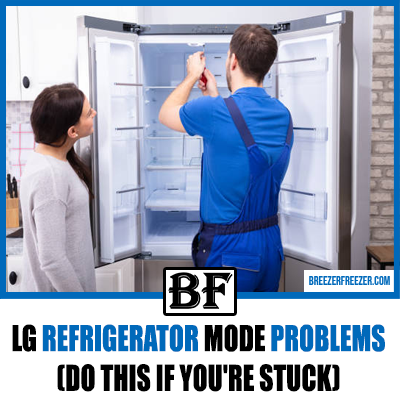10 Steps To Reduce Your Refrigerator Energy Usage And Cost

When we try to conserve energy to save money, we tend to forget about our refrigerators. We close the lights, fan, or even the AC when we don’t use it, but what about the fridge? It stays on every day and consumes energy by the minute.
Well, good news for you! Even if you keep using your refrigerator, there are many inexpensive and easy ways to reduce refrigerator energy costs and usage.
Ways To Reduce Your Refrigerator Energy Usage And Cost:
Keep your fridge in the best condition
Make a weekly or monthly plan to clean your fridge. Proper maintenance of your fridge will contribute to helping your fridge last longer and consume less energy.
While cleaning, make sure to clean the rubber seals for proper closure of doors, the trays and arrange the things inside neatly for better air circulation, check the compressor coils, and defrost the freezer regularly.
Make sure to check and replace your door gasket
The door gasket is also known as the rubber seal, which you can find around the fridge door, is an essential element. This rubber seal helps incorrectly closing the refrigerator door and makes sure your appliance runs smoothly and efficiently.
We can often overlook the rubber lining, so always clean it and replace it when necessary. The seal helps keep your fridge cold, preventing external warm air from entering. When this seal starts wearing down, it pushes your fridge to put more effort into keeping the temperature cold which in turn causes more energy consumption and a rise in bills.
Keep your refrigerator in a cool place
Just like when your fridge seal starts wearing out if you place your fridge near high heat sources. e.g., putting it near the oven or direct sunlight rooms, your fridge compressor starts working at its maximum ability to maintain a cold stable temperature. When your fridge does this, it consumes more energy, and it also shortens the appliance lifespan.
When thinking about keeping our fridge, we usually think about easy accessibility. Still, you must first keep in mind to place it in a cooler room, with a good amount of space at least 5 cm around the refrigerator for proper air circulation and release heat from the compressor to work efficiently; if not, the fridge starts heating up.
Change temperature settings correctly
It is not necessary to keep your fridge temperature at the lowest. Adjust the temperature according to the things you keep inside your fridge. Usually, the temperature of the fridge should be around 37 to 40 Fahrenheit. The lesser the temperature of your fridge, the more energy it consumes and the higher the bill.
Check your refrigerator coils
While cleaning your fridge, don’t forget to check on your condenser coils, as this coil helps keep your fridge cool. The condenser coils usually get covered with dust, so clean it and keep it in the best condition. Why? Well, when this happens, the performance of the coils also starts deteriorating, becoming less efficient. It also makes the coils work harder, resulting in your appliance having problems and causing high energy usage and incurring costs.
Upgrade your fridge
If you have been using your fridge for many years, I guess it might be time to upgrade your fridge! Using appliances from 5 or 10 years back leads to more energy usage and high cost. Your old model refrigerator might be costing you double the bill of what a newer model can give you.
If you are planning on buying one, then make sure to focus on the technological aspects of the refrigerator first. Nowadays, many options in the market have the latest features like smart technology that consumes less energy.
Close the refrigerator door properly
Usually, when we are in a hurry, we tend to forget to close the fridge door properly, which is not suitable for your fridge. As open fridge doors mean, the cold air inside the refrigerator escapes, resulting in more energy usage to bring it back to the average temperature.
It is also advisable to keep kids away from the fridge and teach them to properly close the doors, and try not to keep your fridge door open for a long time when you take out things from it.
Frost build-up
Frost build-up is one of the frequent causes of why refrigerators start working less efficiently. The accumulation of frost hampers the appliance to keep the fridge at cooler temperatures. The coils inside the fridge can get accumulated by frost forcing your fridge to work harder, causing you a lot of energy usage and paying higher bills.
So make sure that you regularly defrost to let your fridge work in its best condition.
Sufficiently load your fridge
Keeping your fridge loaded helps in keeping the temperature stable, especially when you fill the freezer. It enables the refrigerator to work more efficiently. But remember not to overfill it as this will block air circulation.
You can also use ice trays and bottles by filling them with water and keeping it in the fridge. The ice formed will help in keeping the temperature cold.
Avoid keeping hot food
Before you keep the food inside the fridge, make sure to let the food cool down naturally first. Keeping hot food disrupts the stable temperature, and the refrigerator has to work harder to cool it down. As a result, doing this will consume more energy than usual. So loading cold items reduces the strain on your cooling system.
Reduce energy consumption by unplugging or using smart power strips
Unplugging your appliances when not in use is one of the easiest ways to reduce standby energy consumption. Simply unplugging your refrigerator when it’s not in use can save you money on your energy bill. Another way to reduce standby energy consumption is by using smart power strips.
Smart power strips have built-in sensors that can detect when appliances are not in use and automatically shut off power to them. This can help you save money on your energy bill by reducing standby power consumption of appliances.
Smart power strips can also be controlled by a smartphone app, which allows you to monitor and control the power usage of your appliances remotely.
This can be particularly useful for appliances that you may forget to unplug, such as the refrigerator, which can be hard to unplug and plug back in every time. By unplugging appliances when not in use, or using smart power strips, you can reduce standby energy consumption and lower your energy bills.
Reduce energy and cost by getting a smaller fridge
A smaller fridge uses less energy and can help you save money on your energy bill. When shopping for a new fridge, consider the size of your household and the amount of space you need to store your food and drinks.
A smaller fridge will have less volume to cool and therefore will consume less energy.
Renting a smaller fridge is another option. Many companies offer refrigerator rental services for businesses and households. These companies often provide energy-efficient models that are designed to consume less energy and lower your energy bills.
If you’re unable to purchase or rent a new fridge, you can still reduce energy consumption by being mindful of the amount of food you store in your current refrigerator.
Overloading your fridge can cause it to work harder and consume more energy. Keep your fridge organized and make sure to store food properly, so it doesn’t spoil and take up unnecessary space. By purchasing or renting a smaller fridge or being mindful of the amount of food stored in your current fridge, you can reduce energy consumption and save money on your energy bill.
Conclusion
Once you start following the 10 points mentioned above, your fridge will start working more efficiently, helping it reduce its energy consumption level and save you from paying a higher monthly bill. By doing this, you’ll also be increasing the lifespan of your appliance.
If you can’t follow all the given steps, don’t worry; start by implementing one step at a time, and you’ll be on the right path to conserve energy and help the environment in your little way!


